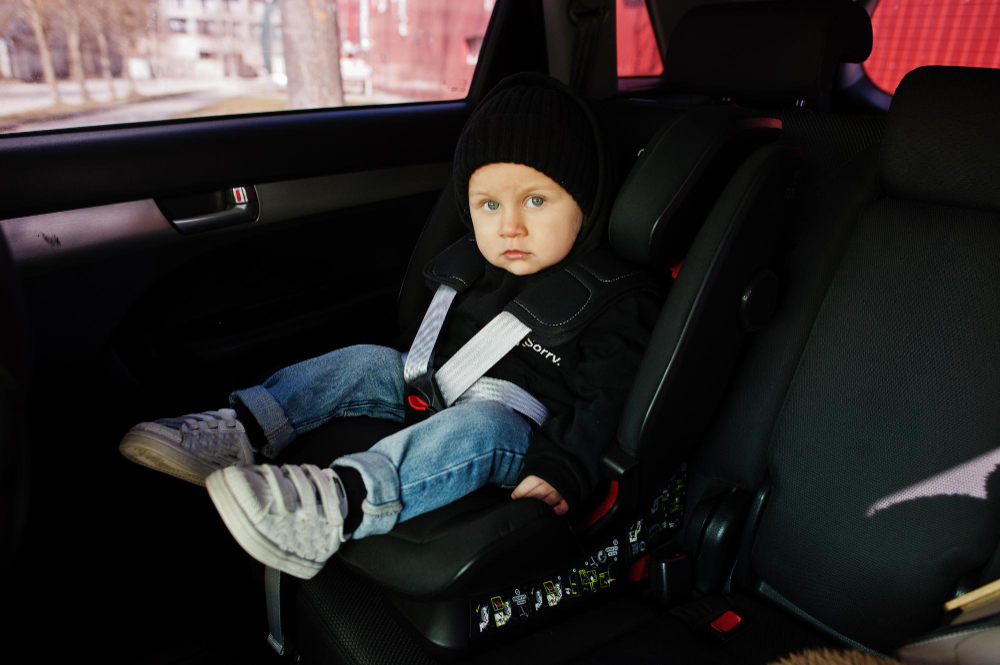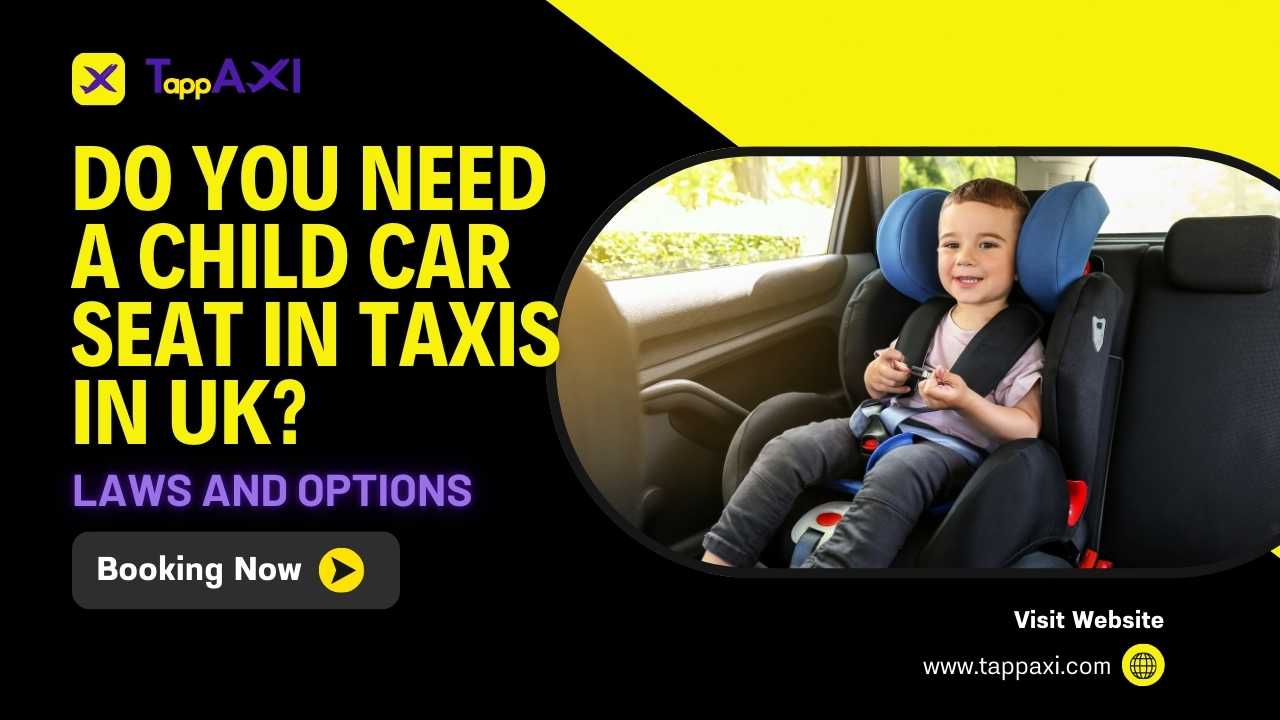Taking a taxi with your child in the UK and not sure if you need to bring a car seat? You’re definitely not the only one.
Legally, taxis don’t always need to have child car seats. If your child is under 12 years old or 135cm, they should use a child car seat. Older kids can use a regular seatbelt if there’s no child seat available. Still, if you’re after peace of mind, having a proper seat is the safest way to go.
In this guide, I’ll walk you through what the law actually says, when it applies, and some simple ways to make taxi travel with your child safer and easier—whether it’s a quick trip around town or something longer.
Understanding Why a Child Car Seatis Important

Travelling with children can be a rewarding and enjoyable experience, but it also comes with challenges and responsibilities. One of the most important aspects of travelling with children is ensuring their safety and comfort in the vehicle.
This means choosing the correct child car seat for their age, weight, and height
Choosing the Correct Child Car Seat for Travel
The first step to ensuring your child’s safety in the car is selecting the right car seat for their needs. There are different types of child car seats available in UK, depending on the size and age of your child. These are:
- Rear-facing baby seats: These are suitable for babies from birth up to 13 kg (around 15 months old). They provide the best protection for your baby’s head, neck, and spine in case of a collision.
- Forward-facing child seats: These are suitable for children from 9 kg to 18 kg (around 9 months to 4 years old). They have a harness that secures your child in the seat and a headrest that supports their head and neck.
- Booster seats: These are suitable for children from 15 kg to 36 kg (around 4 to 12 years old). They raise your child’s position in the car so that they can use the adult seat belt safely.
The Law for Child Seats in UK Taxis
The law for child car seats in UK taxis is different from the law for other vehicles.
In most cases, children under 3 must always be in a child car seat, and children aged 3 or older must use a child car seat or an adult seat belt, depending on the availability and suitability of the car seat.
However, there are a few exceptions and exemptions for taxis and private hire vehicles, particularly related to children under three, that you should keep in mind, such as the taxi exemption from the car seat rule.
According to the gov.uk website, if the taxi driver does not provide the correct child car seat, children can travel without one – but only if they travel in a rear seat:
- Children aged 3 or older must wear an adult seat belt.
- Children under 3 can travel without a seat belt.
This suggests that you do not need to carry your own car seat when travelling with a child in a taxi, but it is always advisable to check with the driver before booking or entering the taxi, especially if there are already two occupied child car seats in the vehicle, considering taxi with child seat exceptions.
Mandatory Use of Child Car Seats in Taxis
Some taxi companies like TappAXI may provide child car seats on request, or you may be able to request one at an extra fee. However, if the taxi driver does have a child car seat that is suitable for your child, you must use it for them. You cannot refuse to use the car seat or choose to use an adult seat belt instead.
Making Room for a Third Child: Rear Seat Arrangements
If you have three children who need child car seats, you may face some challenges in fitting them all in the back seat of the car. Depending on the size and type of your car and the child car seats, you may have to:
- Use a combination of different child car seats: For example, you may use a rear-facing baby seat, a forward-facing child seat, and a booster seat or cushion, also considering taxi booster seat rules.
- Use a narrow or slim child car seat: Some child car seats are designed to be narrower or slimmer than others, which can help you save some space in the back seat.
- Use an Isofix base or a seat belt extender: Isofix is a system that allows you to attach the child car seat directly to the car’s frame without using the seat belt.
Alternatives and Solutions for Child Car Seats
If you are not comfortable with the idea of travelling with your child in a UK taxi without a car seat, or if you are not sure whether the taxi driver will provide a suitable car seat for your child, you may want to consider some alternatives and solutions.
Bringing your own car seat
This is the most obvious and reliable option, as you can ensure the safety and comfort of your child with your own car seat during taxi rides. On the other hand, this method of preferring to take children without a booster seat also has its share of disadvantages.
Requesting a car seat in advance
This is a convenient and affordable option, as you can book a taxi or a private hire vehicle that provides a car seat for your child, ensuring you comply with taxi child seat requirements.
Renting a car seat
This is a flexible and practical option, as you can rent a car seat from a reputable and reliable service that delivers and collects the car seat from your location.
Using a booster seat
This is a novel and innovative option, as you can use a car seat that is designed to be portable, foldable, or inflatable.
What Happens When Travelling Without a Car Seat?
Travelling without a car seat can expose your child to serious risks of injury in case of a collision. According to the UK Department for Transport, in 2019, there were 1,752 road deaths and 25,945 serious injuries in Great Britain. Of these, 52 deaths and 1,798 serious injuries involved children aged 0 to 15.
Potential Consequences
- Head injuries: These can cause brain damage, coma, or death.
- Chest injuries: These can cause internal bleeding, lung damage, or cardiac arrest.
- Abdominal injuries: These can cause organ damage, infection, or shock..
Conclusion
We have explained everything you need to know about child car seats in UK taxis, including the legal requirements, exceptions, alternatives, and solutions.
Your child’s safety and comfort should be your top priority. Choose the option that works best for your situation,








